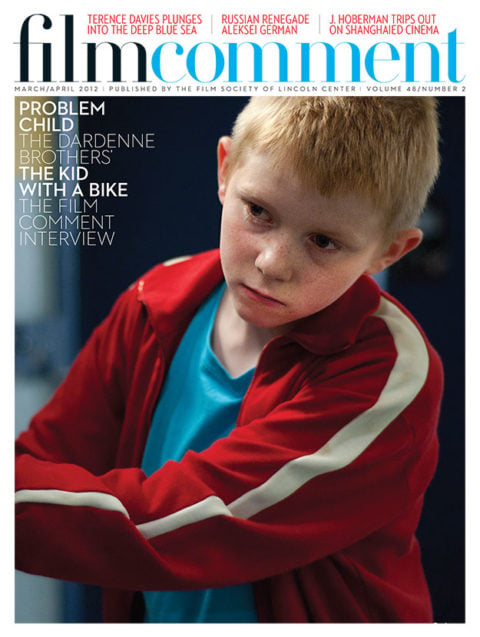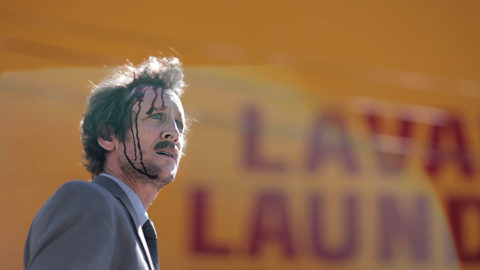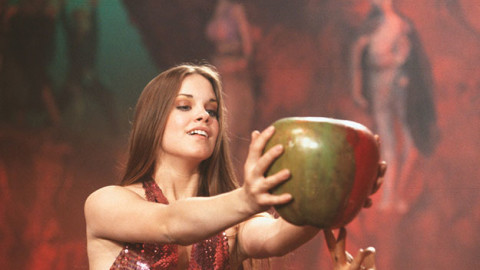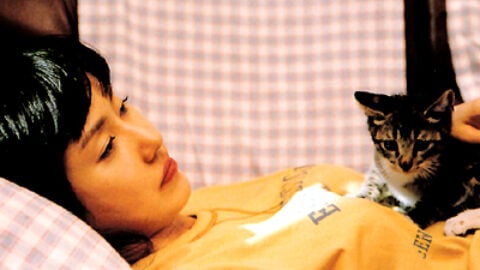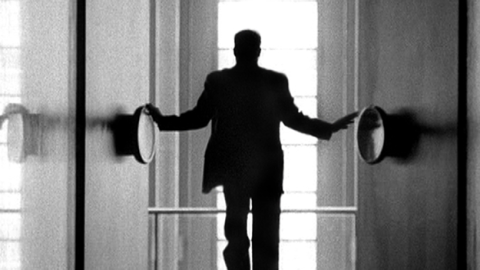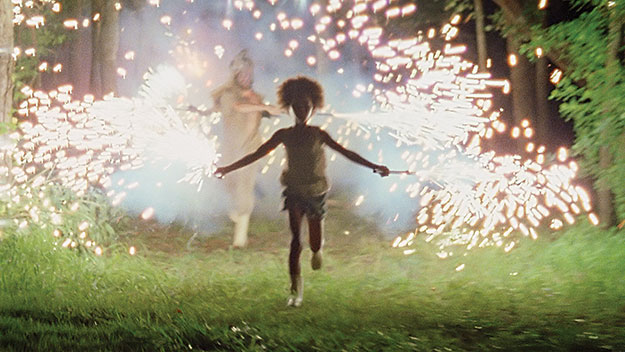
Beasts of the Southern Wild
Benh Zeitlin’s Beasts of the Southern Wild joins a very short list of American fiction movies—Donnie Darko, Safe, Kids, Primer, Ballast—that knocked my icy-cold socks off when I first saw them at the Sundance Film Festival. I’ve seen many other very good movies in the more than two decades that I’ve made the trip up the mountain to Park City, but these were special in that they each created, with passionate conviction and a mastery of film language, a world I had never seen on screen before. They are visionary films, and just when I feared that movies were done and dead and I’d never see another of their likes again, along came Beasts, seemingly out of nowhere.
Actually, Zeitlin had preceded his first feature with a much-celebrated short film, Glory at Sea (08), a post-Katrina fantasy of survivors searching for their lost loved ones under the water, set in the same Louisiana marshlands as Beasts. In the intervening years, he won a production grant from the San Francisco Film Society and developed Beasts (co-written with Lucy Alibar) in the Sundance Labs. (I’ll never accuse the Labs of promoting cookie-cutter uplift again.) Narrated by Hushpuppy (Quvenzhané Wallis), a motherless child who lives with Wink (Dwight Henry), her hard-drinking father, and a dozen or two others on the lush, precarious islands just past the levees that failed New Orleans, the film is not so much magic realism as a realistic depiction of a child’s imagination grappling with the beauties and mortal dangers of the natural world and with the humans who nurture it, or threaten its balance and their own lives in the bargain. Wink knows he’s dying and when he’s not crazy drunk, he tries to teach his daughter the skills she needs to survive. From the opening deep-night fireworks procession through the swamp to the rampaging herd of prehistoric wild boar set loose by the collapse of the polar ice caps, to the shimmering mirage of the Elysian Fields—a river gambling boat where Hushpuppy dances with her long-lost mother—Beasts of the Southern Wild is all heart, a tactile, tender, uncensored, unsentimental, anarchic, moral guide to finding one’s place on the planet. If that sounds sappy, Beasts is not, in part thanks to the mixture of gravity and spontaneity in its star, only 6 years old when the film was shot. Zeitlin went home to New Orleans with the Grand Jury Prize in the Dramatic Competition and a distribution deal from Fox Searchlight. The distributor of The Tree of Life, Searchlight will probably try to position Zeitlin as a young Terrence Malick. They’d be wrong. Zeitlin’s belief in collectivity, which governs every choice in the film, couldn’t be further from Malick’s controlling God’s-eye vision.
Sundance Top 10
1. Beasts of the Southern Wild – Benh Zeitlin, U.S.
2. The Law in These Parts – Ra’an Alexandrowicz, Israel
3. Seeking the Monkey King – Ken Jacobs, U.S.
4. The House I Live In – Eugene Jarecki, U.S.
5. Room 237 – Rodney Ascher, U.S.
6. Bestiaire – Denis Côté, Canada
7. 5 Broken Cameras – Emad Burnat & Guy Davidi, Palestine/Israel
8. Violeta Went to Heaven – Andrés Wood, Chile
9. Where Do We Go Now? – Nadine Labaki, France/Lebanon
10. We’re Not Broke – Karin Hayes & Victoria Bruce, U.S.
Throughout Sundance, I tried to imagine the conversation I would have had about Beasts with Bingham Ray, who loved the wildness in the films of Lars von Trier as much as the realism of Mike Leigh. But Ray died of the series of strokes he suffered in the first days of the festival. He had recently left part-time, clearly temporary gigs at the Film Society of Lincoln Center and SnagFilms (“They’re paying me to learn about VOD,” he said gleefully about the latter) to head the San Francisco Film Society, as close as he could possibly come to his dream of running a repertory theater somewhere outside New York that would become a destination for people like himself who could never get enough of the movies. And then he was gone, and much of the sense of excitement in the world of international art films seemed to die with him.
But it wasn’t only Ray’s passing that made Sundance feel so lackluster. The problem was the blatant lack of ambition in most of the American fiction narratives, excepting Beasts. I might have missed one or two interesting movies, but most of what I saw would have made me regret walking a block to my local New York theater, let alone doing the daily Sundance hike through the snow to the shuttle bus, then from the bus to the crowded theater lobby, then the movie—more often than not, instantly forgettable—then back through the snow to another bus, and all of that five or more times a day. But despite the tepid responses of audiences and press, lots of movies sold to both veteran and start-up distributors, all of whom needed to fill their VOD platforms. So if you want to talk about why the bar is lower for American independents, count the new delivery system in the mix.
In this context, the more mainstream movies were at least mildly entertaining. Julie Delpy’s downtown family screwball comedy 2 Days in New York had Chris Rock playing the sensible straight man to Delpy’s hysteric, their chemistry at moments reminiscent of Grant and Hepburn in Bringing Up Baby. Not as totally in charge as Delpy, who directed and co-wrote 2 Days, giving herself a good role and Rock a better one, Rashida Jones merely co-wrote and co-stars with Andy Samberg in Celeste and Jesse Forever, which was nominally directed by Lee Toland Krieger. But it’s Jones’s character, gradually realizing that she doesn’t need to be coupled off to be happy, that makes the movie worth a look. A more serious consideration of a woman gradually coming to terms with untying the knot, Ava DuVernay’s Middle of Nowhere starts slowly (I don’t need 10 minutes of medium close-ups of more-than-promising newcomer Emayatzy E. Corinealdi to convince me that she’s a beautiful black woman) but comes into focus as Corinealdi’s Ruby gradually begins to question her responsibility to her husband who’s doing hard time for an unspecified crime. All things being equal, Corinealdi, Omari Hardwick as Ruby’s husband, and David Oyelowo as the bus driver who gives an emotional lift to Ruby’s life and the entire movie as well would all be headed for stardom. But as we know, and Spike Lee never fails to tell us, racism is alive and thriving shamelessly in the Industry.
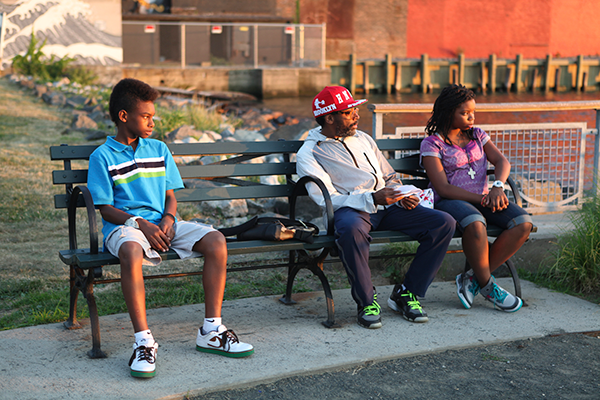
Red Hook Summer
One of the most highly anticipated movies of the festival, Lee’s Red Hook Summer has ambition to spare, but the script and execution leave it unfulfilled. Set in a low-income housing project in the titular Brooklyn neighborhood, the movie is a coming-of-age story, seen through the eyes of a teenage African-American boy who has been sent by his mom in Atlanta to spend the summer with his grandfather, the bishop of the struggling basement Baptist church that is the rock of the good people of the projects. (Why Mom has done this, considering she is as impatient with her father’s religiosity as Lee seems to be, is only the first of many holes in the script.) The boy quickly learns that he has two choices: hang out with the church folk or fall prey to the gang that rules the other side of the apartment complex. At least the church folk make great music, and the music scenes—whether they involve impromptu choruses or Bruce Hornsby’s score soaring over exterior long shots—are thrilling and in one case heartbreaking. Perhaps a more experienced editor than the NYU student Lee drafted would have disposed of the repetitive dialogue sequences, persuaded Lee to abandon the clichéd climactic revelation, and even made it seem like the actors are performing stylistically in the same movie. Lee’s best films balance right at the edge of becoming full-fledged musicals. This one keeps falling flat.
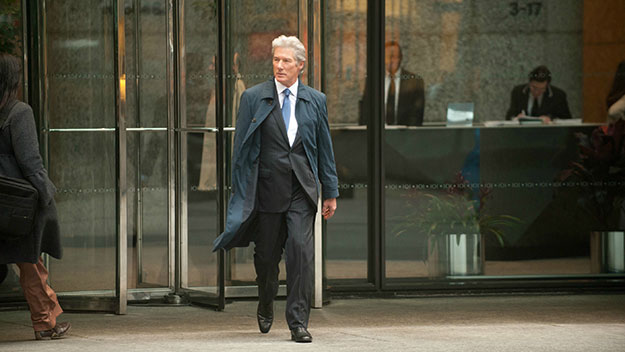
Arbitrage
Slightly flat as well, although it moves at a good clip, Nicholas Jarecki’s debut feature, Arbitrage, is a Wall Street thriller that has Richard Gere as a billionaire hedge fund manager who’s trying to sell his company before the prospective buyer discovers he’s cooked the books. As if financial fraud wasn’t enough, he is also trying to cover up his involvement in the death of his mistress. Gere’s movie-star charisma and his slippery silver-fox characterization carry the film, and Jarecki has surrounded him with a flawless supporting cast headed by Tim Roth as a small-town detective who is willing to engage in some fraud of his own to nail the rich guy. Never indulging in Oliver Stone–style hyperbolics, Jarecki goes too far in the opposite direction, by being just a bit too casual about the fact that a guy who believes he’s above the law in the end turns out to be absolutely right.
My prize for the most abhorrent, classist, sexist movie of the festival goes to Craig Zobel’s Compliance, which allowed a lot of upper-middle-class white guys (who else did the filmmaker imagine would comprise his audience?) to go back to their condos and tut-tut about the gullibility and moral failure of an overweight, middle-aged woman who’s been stuck in a shit job in a fast-food restaurant for her entire working life. Whenever I’d argue against the movie, I was told either that it was based on a true story (as if that obviated the specific script and casting choices the director made) or that the filmmaker meant us to feel, simply because we watched the movie to the end, complicit in the hoax perpetrated on the woman and/or in her resulting behavior, which I very much doubt the supporters of the movie did. You have to be Hitchcock to make the complicity strategy work, and even about him, I have my doubts.
The best of Sundance, for the most part, is to be found not in based-on-a-true-story fictions but in documentary. Eugene Jarecki (brother of Nicholas and maker of Why We Fight and The Trials of Henry Kissinger) took the Grand Jury Prize in the U.S. Documentary Competition for The House I Live In, an analysis of the 40-year-long government-sponsored—at the cost of one trillion taxpayer dollars—war on drugs that has resulted in the highest rate of incarceration of any country in the world and has made the prison system a highly lucrative industry. It has also permanently ghettoized a segment of the work force that capitalism cannot incorporate. Imagine what the unemployment statistics would be now if they included every felon incarcerated for low-level dealing or using, as would be the case if drugs were treated as a public health issue rather than as a crime. Historian Richard Lawrence Miller nails this analysis with a parallel to the gradual ostracism of the European Jews in the years leading up to the Holocaust. First they came for the Chinese immigrants who flooded the West Coast labor market at the turn of the 19th century by criminalizing opium; then, with the Great Migration north, they came for African Americans by criminalizing heroin and then crack cocaine; then they came for the white unemployed in the rust belt who turned to methamphetamine for income and pleasure…
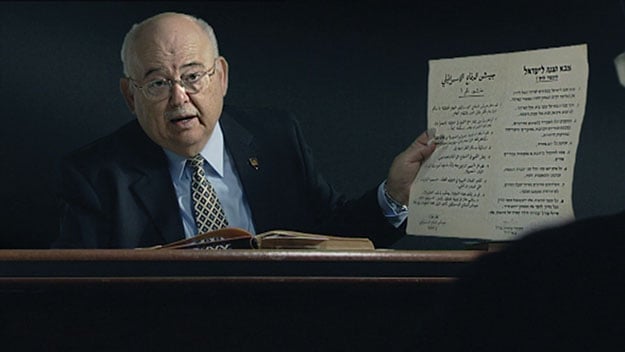
The Law in These Parts
Ra’anan Alexandrowicz’s brilliant The Law in These Parts, which won the Grand Jury Prize in the World Cinema Documentary Competition, and Emad Burnat and Guy Davidi’s moving 5 Broken Cameras, which won the Best Director Award in the same category, take different approaches to making an indisputable case against Israel in the endless conflict in the occupied territories. Both are necessary movies—the first appealing primarily to the head, the second to the heart.
Some of the best nonfiction films showed in the “experimental” New Frontier section, making them ineligible for prizes. Ken Jacobs’s outraged Seeking the Monkey King capped a program of short Frontier films (I wish I could have been in Salt Lake City when it played there). The mystery of non-human living creatures and our failures with respect to them is the underlying subject of Denis Côté’s beautiful and often appalling Bestiaire. Côté’s camera gazes long at each of the inhabitants of Quebec’s Parc Safari, and often the creatures, great and small, many horribly out of their element in the Canadian snow, return the look.
New Frontier also scored a coup with what became, along with Beasts of the Southern Wild, the most excitedly discussed movie of the festival, Rodney Ascher’s Room 237, which aggregates various interpretations of subtext in Stanley Kubrick’s The Shining, illustrating them with clips from the film that literally took my breath away, so stunning did they look in the context of the digital vague-outs of most Sundance movies. Some of the theories—in particular, Geoffrey Cocks’s unpacking of the Holocaust references—are brilliant. Others, like Jay Weidner’s, are just goofy. Weidner reads The Shining as Kubrick’s confession of his involvement in faking the Apollo 11 moon-landing images. (Did Weidner never consider that Kubrick might have been pulling the leg of those who had been spreading that rumor for a decade?) The first thing I did when I got back from Sundance was to put on my copy of The Shining.



